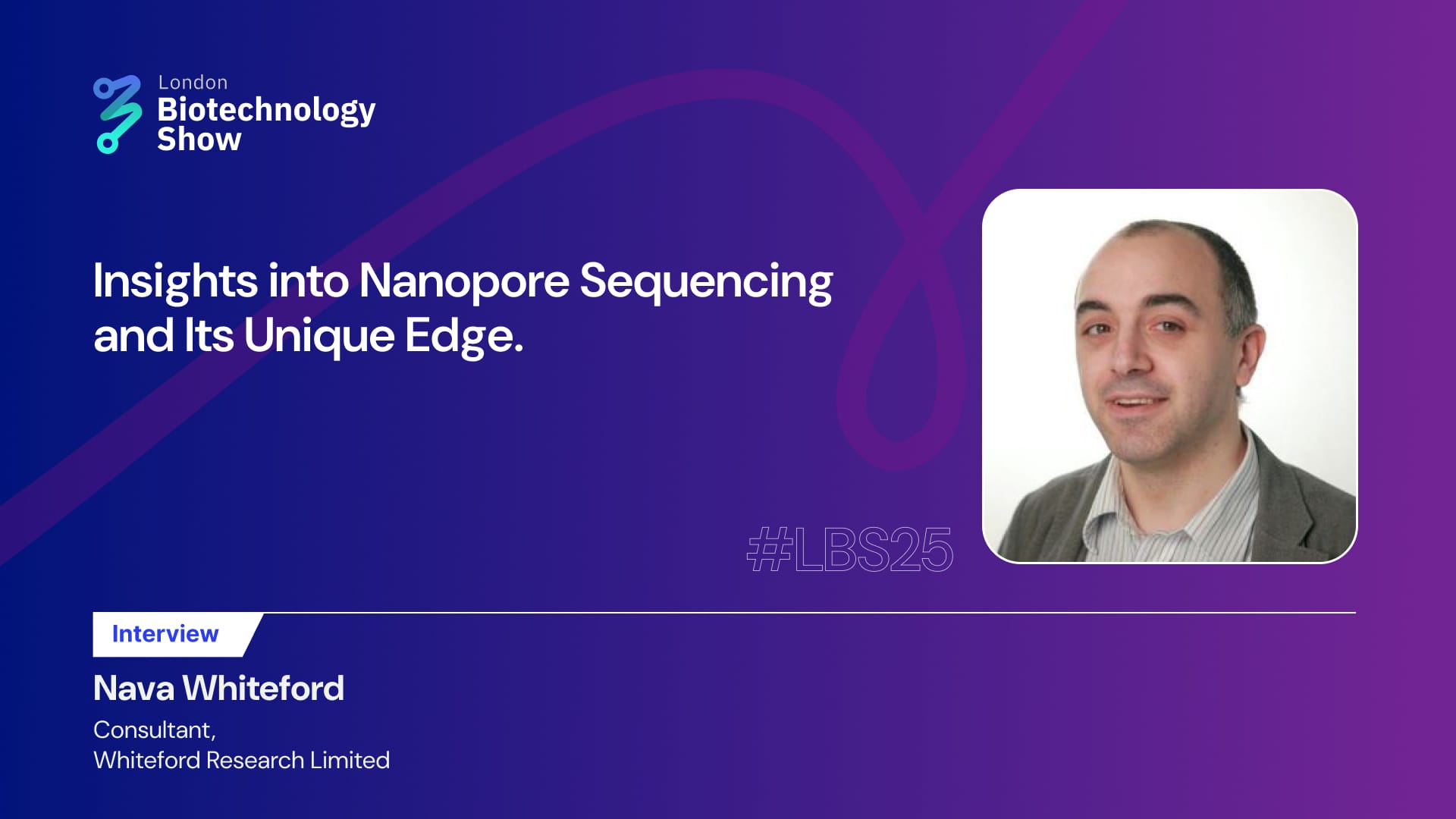In a recent interview with Nava Whiteford, Consultant at Whiteford Research Limited, we delved into what sets nanopore sequencing apart from other available sequencing technologies. He shared valuable insights with Muhammad Younis into the unique advantages of this approach, its current limitations, and the potential it holds for the future.
#LBS: How do you foresee the integration of nanopore sequencing with other omics technologies (like proteomics or metabolomics) enhancing our understanding of complex biological systems and diseases?
Nava Whiteford: What are the key advantages of nanopore sequencing currently deployed? Principally there are three:
a) Longer read lengths (Up to ~1Mb versus 20Kb).
b) Direct sequencing of RNA.
c) Ability to directly detect base modifications.
These are all neat, but it’s currently unclear how much value this will have in addressing complex diseases. While long reads are useful for investigating certain rare diseases it’s unclear to me what the marginal utility of 1Mb versus 20Kb reads is. In particular, looking at repeat expansions for example, these are often well addressed by reads in the 20Kb range. Nanopore sequencing also appears to have significant issue sequencing through repeats (which likely cause both issues with the base calling model, and the motion control enzyme stuttering over the repeats).
It’s possible that direct detection of base modifications could prove important, particularly for things like early stage cancer diagnostics. Methylation in particular has shown some success here (GRAIL). But this is still far from clear, and the relatively low accuracy of nanopore sequencing could be an issue here.
#LBS: What are the current limitations of nanopore sequencing technology in terms of accuracy and read length, and how are ongoing research and development efforts addressing these challenges?
Nava Whiteford: Nanopore sequencing currently leads on read length, I don’t see an issue here. Accuracy remains the lowest of all currently available sequencing approaches. This remains a significant issue in my view. Approaches like duplex sequencing (sequencing both strands) may help. The key technology that help PacBio (single molecule optical) boost their accuracy was CCS (Cyclic Consensus Sequencing). In this approach they sequence the same template 7+ times. If nanopore sequencing could somehow incorporate a similar error correction strategy this might help, but this seems technically problematic.
Personally, I think nanopore sequencing has many niche advantages (discussed above). And rather than chasing accuracy it might be better to focus on these advantages. An over emphasis on single read accuracy, may in fact lead to an increase in systematic error rate (through overfitting) and may not be advisable.
#LBS: Considering the rapid advancement and decreasing cost of nanopore sequencing, what potential ethical and privacy concerns might arise, particularly regarding personal genomic data, and how should the scientific community address them?
Nava Whiteford: An issue for nanopore sequencing as deployed by Oxford Nanopore is that flowcells are lease items, and by my reading of the latest customer agreements flowcells must be returned within 90 days of being used. It’s unlikely that all material can be cleared from flowcells and this seems less than ideal for use in a diagnostic context where patient privacy is being protected.
Beyond this, I’m not sure nanopore sequencing specifically poses unique ethical and privacy concerns. DNA sequencing using other methods is already far cheaper than nanopore sequencing, and anyone can get their whole genome sequenced (or less ethically, someone else’s without their permission) using these services for ~$500.
#LBS: How do you envision the role of nanopore sequencing evolving in personalized medicine and targeted therapies over the next decade, and what specific breakthroughs or innovations would drive this change?
Nava Whiteford: I suspect it’s over-rated. Nanopore sequencing may have a place where low cost, small portable instrumentation (but high cost per sample/run) is important. But the reality is most applications are not like that. A significant barrier to adoption is not just the sequencing, but everything around it. We’ve yet to see a true “sample-to-answer” DNA/RNA sequencer in the way we have seen sample-to-answer qPCR instrumentation. I’m pretty excited about the prospect of a sample-to-answer sequencing platform. But this isn’t something uniquely enabled by nanopore sequencing.
I do think things are going to get more exciting in the nanopore sequencing world. We now have three nanopore companies with platforms on the market or near release (Oxford Nanopore, Qitan and MGI). The Oxford Nanopore manufacturing approach uses relatively expensive semiconductor manufacturing processes. Perhaps some of these other folks will focus more on cost of goods reduction resulting in low cost consumables? This could open up more applications.

